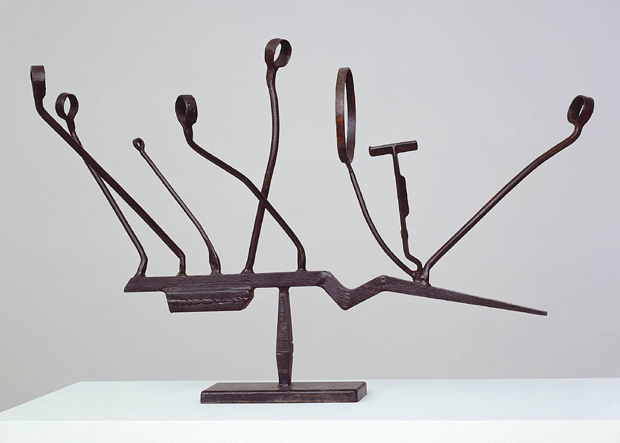
David Smith - the sculptor who drew with metal
When he died in a car crash the artworks for his last show remained unsold - today they grace the best collections around the world. Phaidon Focus book reveals how the artist revolutionised sculpture by literally 'drawing in space'
Lots of you have been commenting on and liking the stories we’ve been running to accompany our Phaidon Focus series of books (which makes us happy, thanks). The Focus series, (an initial series of six books) as well as giving an overview of an artist’s work and career also looks at key areas in their artistic journey. Today we’re going to bring you a story about one of the perhaps lesser known – though no less important - artists in the series, David Smith.
Smith was a revolutionary sculptor, operating in America from the early 1930s, initially establishing his workshop in the Brooklyn Navy Pier in New York in 1933. At the time most sculptors used a bronze foundry, a marble quarry or a conventional studio and by so doing Smith fundamentally recast the artist’s role and persona. When he left the space in 1940 it was to a rural environment, essential to his evolution as an artist and partly responsible – as much as environment can be – to the size and imagery of his new work.
Many of Smith’s sculptures made after 1954 bear inscriptions such as ‘Hi Rebecca’ or ‘Hi Candida’, which he said would stand as perpetual greetings to his two daughters, in the future, when his legacy found its eventual place in museums. But at the time they were made, there was neither a market for these works nor any willing collectors with appropriate settings to house them.
{media4}
In fact, his last show at the Marian Willard Gallery in New York in 1956 yielded no sales whatsoever. When Smith died in a car accident on 23 May 1965, while driving to Bennington, Vermont, most of his oeuvre remained in his possession. Now it can be seen in museums around the world. So his premonition came true.
Smith pioneered the technique of welding in America to make art. The industrial process adopted by Picasso and González to make sculpture resonated with Smith, who grasped the deeper meaning implicit in the Constructivist method: “Since I had worked in factories and made parts of automobiles and had worked on telephone lines I saw a chance to make sculpture in a tradition I was already rooted in.”
{media1}
As the book reveals, welding – a technique of joining metals – was invented in the late nineteenth century. Individual steel pieces are permanently joined together by melting a separate steel ‘filler’ rod. The three elements fuse to create a new single bond. In oxyacetylene welding, a torch heats the metal and filler; arc welding uses heat created by an electric current. The molecularly bonded whole naturally appealed to Smith, for whom the concept of ‘unity’ was central to his aesthetic ambitions.
Steel – the material of capitalist industry, military power, progress and even brutality – was exciting to Smith, because it brought the modern world into the realm of art, unburdened by any artistic history. There were practical reasons for embracing welding as well: the material was at once inexpensive and strong.
{media2}
Welding provided a direct way to make an object, more like the immediacy associated with painting on canvas than traditional cast bronze, which entailed many steps and needed a commercial foundry. Equally important, it enabled Smith to labour alone, to control every mark and physical detail, creating unique, irreproducible objects. In fact, never abandoning his pictorial roots, he often painted his metal sculptures. Smith believed that mechanical reproduction debased the individual artwork, and therefore, withvery rare exceptions never produced editions, even when handling cast bronze.
At first, Smith used an oxyacetylene torch, but during World War II he mastered electric arc welding at the American Locomotive Factory. Throughout his career, Smith paid special attention to the visual effect of this technique. Sometimes he left welds visible, as reminders of the process that joined the separate elements. Alternatively, he would grind the metal accumulation away to accentuate the totality of a piece, as he did in Australia. Manipulating steel with the fluidity of a master, Smith was able to realise its full artistic potential.
If that little passage has intrigued you you can order David Smith here and check out the other artists in the Focus series here.
{media3}